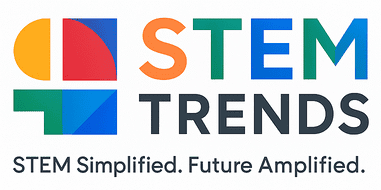10 Powerful Ways Machine Learning Is Changing Everyday Life
By John
Discover how smart algorithms are quietly transforming your world
Machine learning isn’t just a buzzword tossed around in tech conferences and across the internet today—it’s a powerful force reshaping how we live, work, shop, and even stay healthy. Behind many of the tools you use daily are machine learning algorithms quietly helping you make decisions, offering suggestions, and improving your experiences. From smart assistants to fraud detection, here are 10 powerful ways machine learning is changing everyday life across the globe.
1. Smarter Online Shopping and Recommendations With Machine Learning
Ever noticed how Amazon suggests the perfect product, or how Netflix knows what you might want to binge-watch next, or how Spotify curates a suggested playlist for you? That’s machine learning on full-scale work right there. These platforms analyze your browsing history, purchases, and ratings to predict what you might like next. According to a 2023 McKinsey report, product recommendation engines powered by ML can increase sales by up to 30%. They also help retailers optimize inventory and personalize marketing efforts.
2. Voice Assistants That Understand You Better
Whether you’re asking Siri to play your favorite playlist or telling Alexa to turn off the lights, you’re interacting with machine learning. These assistants use natural language processing (NLP), a subset of ML, to understand and interpret spoken commands. The more you use them, the smarter they get—adapting to your speech patterns, preferences, and routines.
3. Better Email Spam and Scam Filters
You probably don’t even think about how few spam emails reach your inbox. Machine learning is behind that too. Services like Gmail use ML algorithms to detect suspicious patterns and filter out harmful content. These filters can now block over 99.9% of spam and phishing emails, according to Google. As threats evolve, ML helps email services stay ahead without manual updates.
4. Personalized Healthcare and Early Diagnosis
Healthcare is one of the most exciting frontiers for machine learning. From predictive diagnostics to personalized treatment plans, ML is enabling faster and more accurate care. For instance, ML models are now being used to detect early signs of diseases like cancer, Alzheimer’s, and diabetic retinopathy from medical images—with accuracy comparable to (and sometimes better than) human doctors.
Wearables like Apple Watch and Fitbit also use machine learning to track heart rate irregularities and alert users to potential health issues in real time.
5. Navigation and Traffic Forecasting
Whether you’re using Google Maps or Waze to beat traffic, machine learning is behind the scenes analyzing real-time data. These platforms consider road conditions, traffic volume, user reports, and historical data to find the fastest route. ML also helps ride-sharing apps like Uber and Lyft set dynamic pricing, estimate arrival times, and match passengers with drivers efficiently.
6. Financial Fraud Detection
Every time your bank blocks a suspicious transaction or your credit card company texts to confirm a purchase, that’s machine learning in action. Financial institutions use ML to detect anomalies in spending behavior, flagging potentially fraudulent activity. These systems learn from billions of past transactions and continuously update their models to stay effective.
According to the Federal Reserve, machine learning has helped reduce false fraud alerts while increasing detection accuracy—saving both consumers and banks millions of dollars annually.
7. Smart Home Devices and Automation
Smart thermostats like Nest learn your preferences and adjust temperatures automatically to save energy and money. Security cameras use ML-powered facial recognition to alert you if an unknown person approaches your home. Even your smart fridge might use Machine Learning to suggest recipes based on what’s inside or alert you when groceries are low.
As more U.S. households adopt smart home devices, machine learning is making homes more efficient, secure, and comfortable.
8. Improved Customer Support with Chatbots
Tired of waiting on hold for customer service? ML-powered chatbots are making that experience much better. Many companies now use intelligent virtual assistants to handle basic inquiries 24/7—from checking an order status to resetting your password.
These bots use natural language understanding to provide fast, helpful answers, and they’re constantly learning from interactions to improve. It’s no wonder that over 80% of customer interactions are expected to be handled by AI tools in the nearest future.
9. Social Media Feeds Tailored Just for You
From TikTok’s addictive “For You” page to Instagram’s suggested reels, machine learning shapes what you see on social media. These platforms study your behavior—likes, shares, watch time—to serve up content you’re more likely to engage with. While this raises important questions about echo chambers and digital well-being, there’s no denying that ML is central to how content is curated and consumed today.
10. Safer Roads with Driver Assistance Systems
Modern vehicles come packed with advanced driver-assistance systems (ADAS), many of which are powered by machine learning. Features like lane-keeping assistance, automatic emergency braking, and adaptive cruise control rely on real-time image recognition and sensor data.
Companies like Tesla, Waymo, and GM’s Cruise are investing heavily in self-driving technologies, using ML to process road data, predict pedestrian behavior, and make split-second decisions. While fully autonomous vehicles are still being tested, elements of machine learning are already making daily driving safer for millions of Americans.
The Bottom Line
Machine learning may not be visible, but its impact on everyday life is enormous—and growing. It powers the apps we rely on, the healthcare we receive, the products we buy, and the ways we stay connected. While there are ethical and privacy issues to navigate, the benefits of ML are undeniable: greater convenience, safety, personalization, and efficiency.
In the next few years, as computing power increases and data becomes more accessible, we’ll likely see even more seamless integrations of machine learning into our daily routines. The smartest innovations won’t always look flashy—but they’ll quietly make life better, one algorithm at a time.


